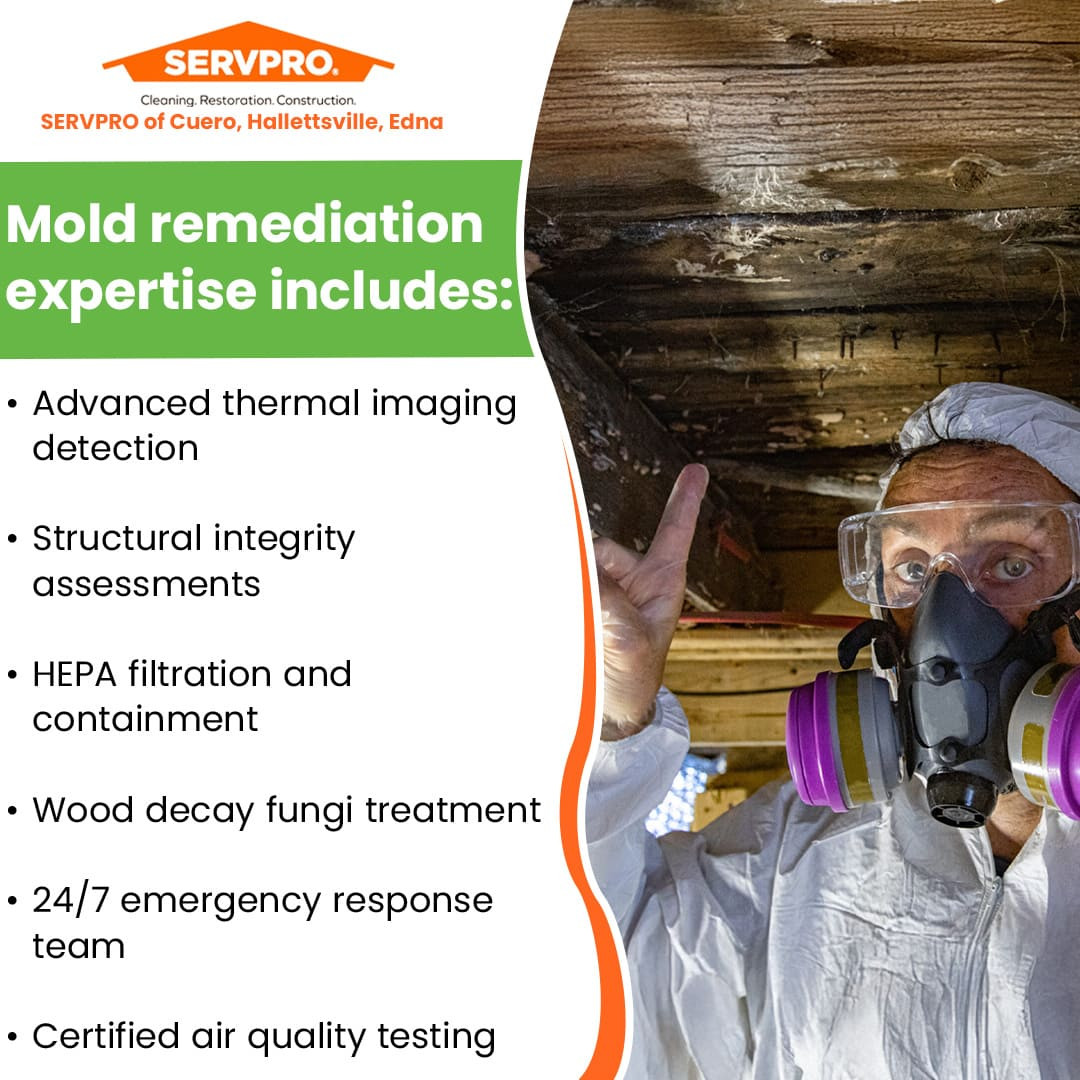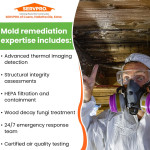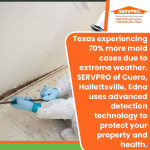San Antonio, Texas – Recent extreme weather events across Texas have created widespread moisture problems, leading to dangerous mold infestations in residential and commercial properties. SERVPRO® of Cuero, Hallettsville, Edna reports a 70% increase in mold remediation requests following the state's unusual weather patterns, including atmospheric rivers and alternating drought-flood cycles that compromise building integrity.
Climate variability drives mold growth acceleration
Property restoration professionals identify direct correlations between climate variability and accelerated mold growth rates. Hurricane-force winds damage building envelopes, allowing water infiltration that creates ideal conditions for fungal colonization. The 2022 Hurricane Ian aftermath demonstrated how delayed moisture control transforms manageable water damage into extensive Mold removal projects requiring complete structural rehabilitation.
Scientific analysis reveals that mold spores begin colonizing within 24-48 hours when materials remain saturated. Professional restoration companies observe Stachybotrys chartarum, commonly known as black mold, establishing colonies in flood-damaged properties where moisture persists beyond 72 hours. These aggressive species consume organic building materials, including wood framing, drywall paper facing, and cellulose insulation.
Unexpected moisture sources beyond traditional flooding
Unexpected moisture sources beyond traditional flooding create additional remediation challenges. Wildfire suppression efforts saturate structures with thousands of gallons of water, creating conditions requiring extensive mold clean-up weeks after fires are controlled. Atmospheric rivers deliver unprecedented rainfall volumes to regions lacking adequate moisture barriers, overwhelming drainage systems, and penetrating building foundations.
SERVPRO of Cuero, Hallettsville, Edna utilizes advanced detection technology, identifying hidden moisture pockets where mold thrives undetected. Thermal imaging cameras reveal temperature variations indicating water accumulation behind walls and above ceilings. Moisture meters provide precise readings, determining whether building materials require replacement or can be salvaged through professional drying procedures.
Structural integrity compromised by fungal decay
Structural damage from unchecked mold growth presents serious safety concerns beyond surface contamination. Wood decay fungi digest lignin and cellulose, reducing load-bearing capacity by 60% within six months. Ceiling collapses, wall separations, and floor system failures result from advanced fungal decay that property owners often discover too late. Professional mold remediation includes a comprehensive structural assessment, identifying compromised components requiring replacement.
Financial impact extends beyond cleanup costs
Financial implications of mold damage extend beyond immediate cleanup costs. Insurance policies typically limit mold coverage to $5,000-$10,000, while actual remediation expenses range from $30,000-$50,000 for extensive contamination. Property values decrease 15-25% following documented mold problems, affecting marketability even after professional restoration. Disclosure requirements mandate sellers reveal past mold issues, influencing buyer decisions regardless of remediation quality.
Modern prevention strategies and technology solutions
Modern construction techniques incorporate mold-resistant materials addressing increased moisture challenges. Fiberglass-faced drywall eliminates paper food sources supporting fungal growth. Closed-cell foam insulation resists moisture absorption while providing superior thermal performance. Composite lumber products replace traditional wood in moisture-prone applications, reducing susceptibility to decay.
Smart monitoring systems prevent mold establishment
Advanced technology allows for proactive moisture monitoring, quickly detecting leaks and maintaining optimal humidity to prevent mold. Remote monitoring identifies issues early. SERVPRO of Cuero, Hallettsville, Edna stresses prevention via regular maintenance, immediate water extraction, and professional assessments to address vulnerabilities..
Community response and professional remediation standards
Community-wide programs address mold problems through education and structured response strategies. Local governments create post-disaster protocols that include rapid moisture evaluation and mold clean-up guidance. Public departments distribute information about risks from mold exposure, especially for vulnerable groups such as children, elderly residents, and individuals with respiratory conditions.
Specialized equipment and safety procedures
Mold removal requires specialized equipment, safety procedures, and containment barriers. HEPA systems capture airborne contaminants, and antimicrobial applications help reduce regrowth. After remediation, verification through air quality testing and visual inspections confirms removal, supporting insurance claims. Industry demand is expected to increase due to climate change, requiring stronger moisture protection. Professional assistance is recommended for contamination larger than 10 square feet or involving HVAC systems.
About SERVPRO of Cuero, Hallettsville, Edna
SERVPRO of Cuero, Hallettsville, Edna provides professional mold remediation throughout the San Antonio, Texas region. Certified technicians employ advanced detection technology and proven removal techniques, addressing visible colonies and hidden growth within building structures. The company responds 24/7 to water damage emergencies, preventing mold establishment through rapid moisture elimination. Their systematic approach includes assessment, containment, safe removal, and prevention strategies protecting property values and occupant health.
Property owners requiring mold assessment or remediation services should contact SERVPRO of Cuero, Hallettsville, Edna at (361) 248-2388 or email office+4@servpro11423.com.


















